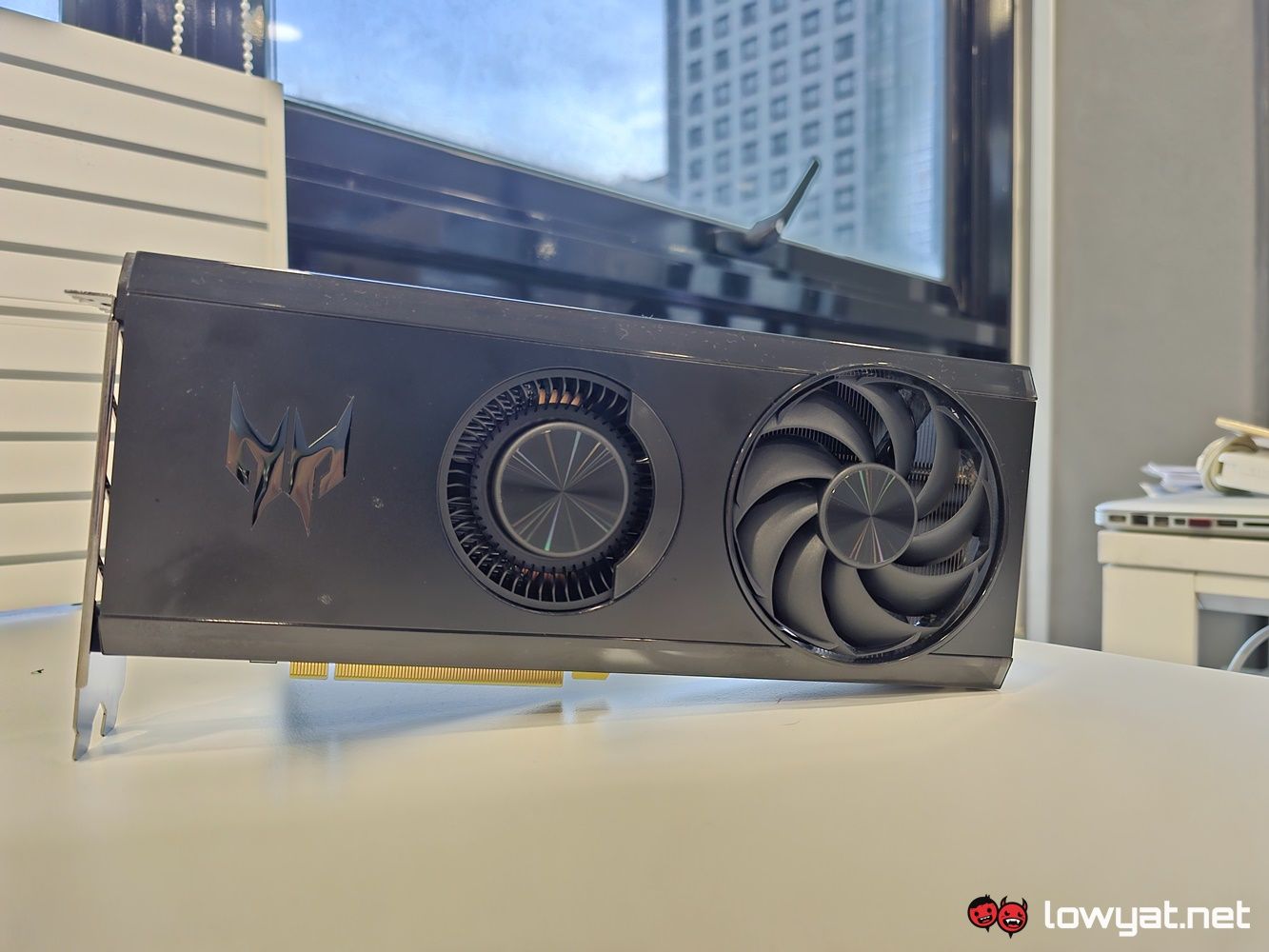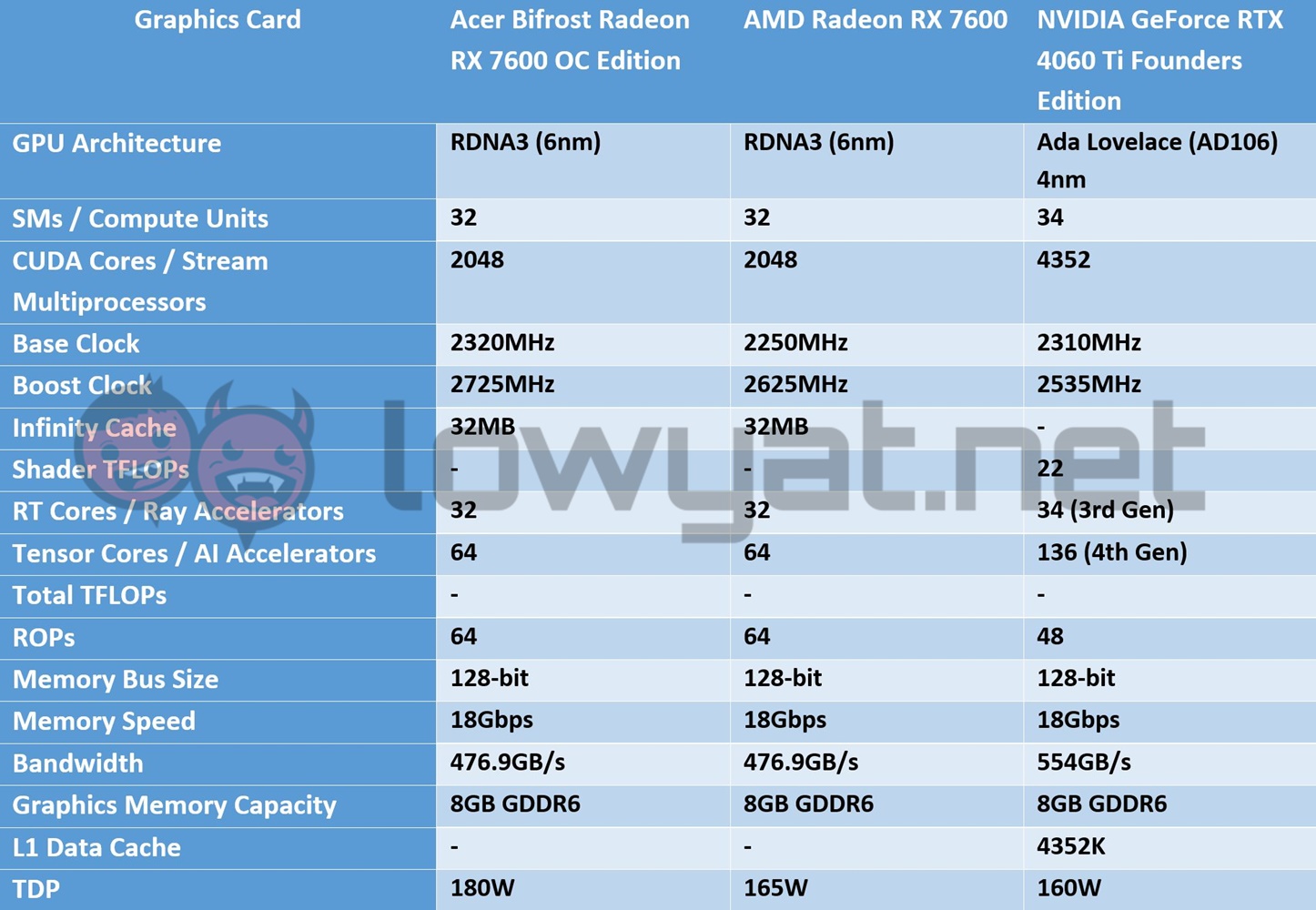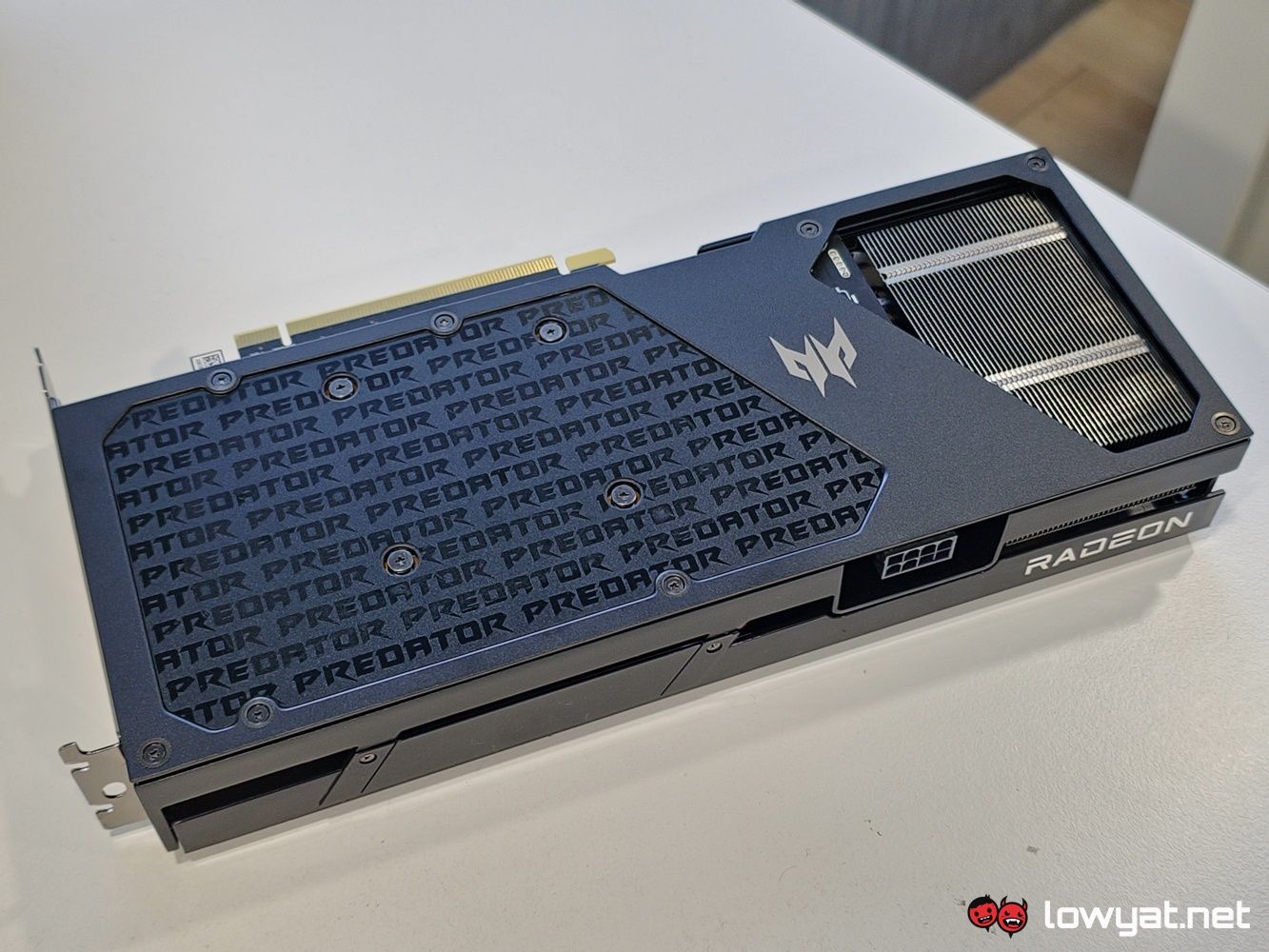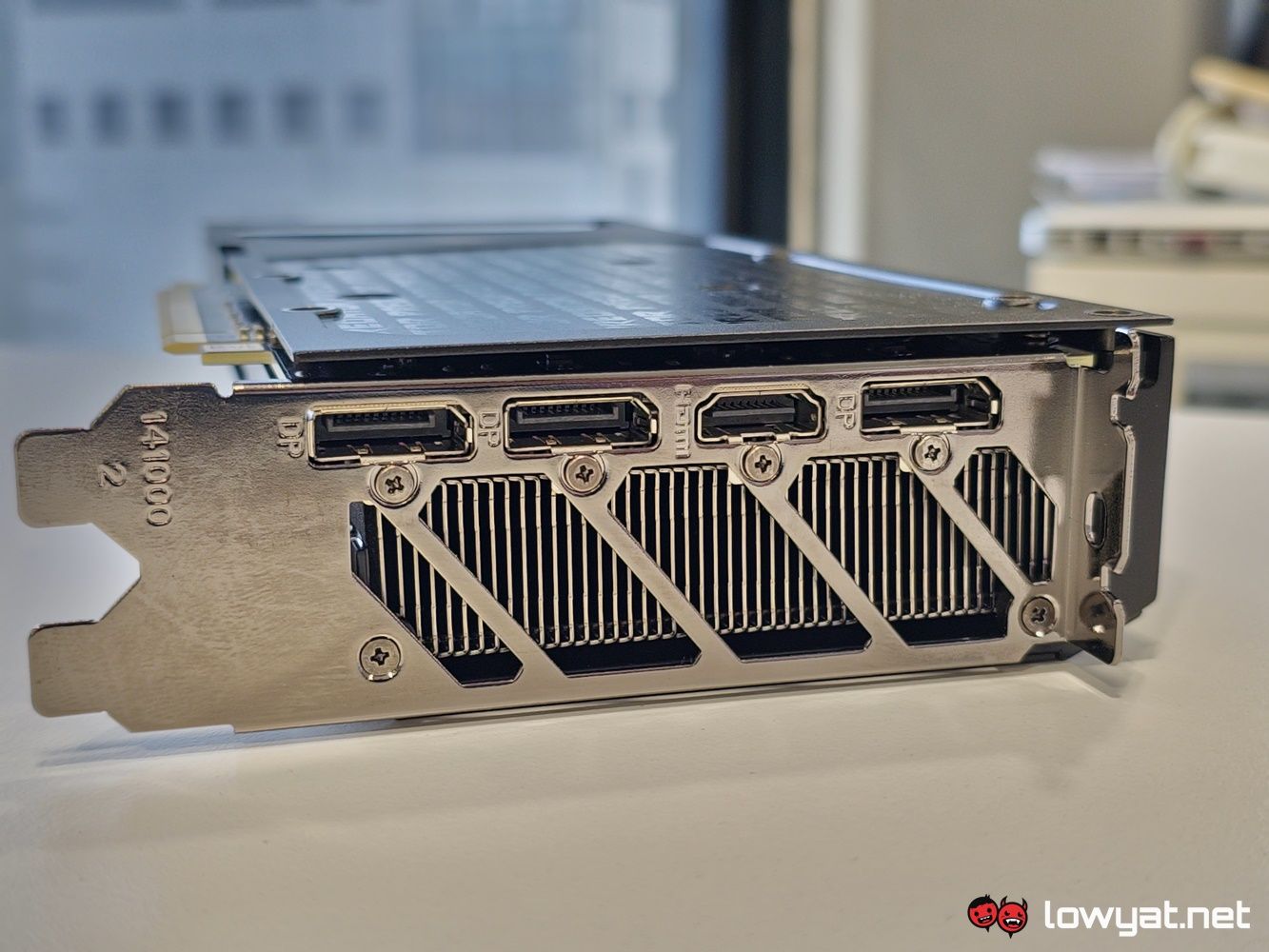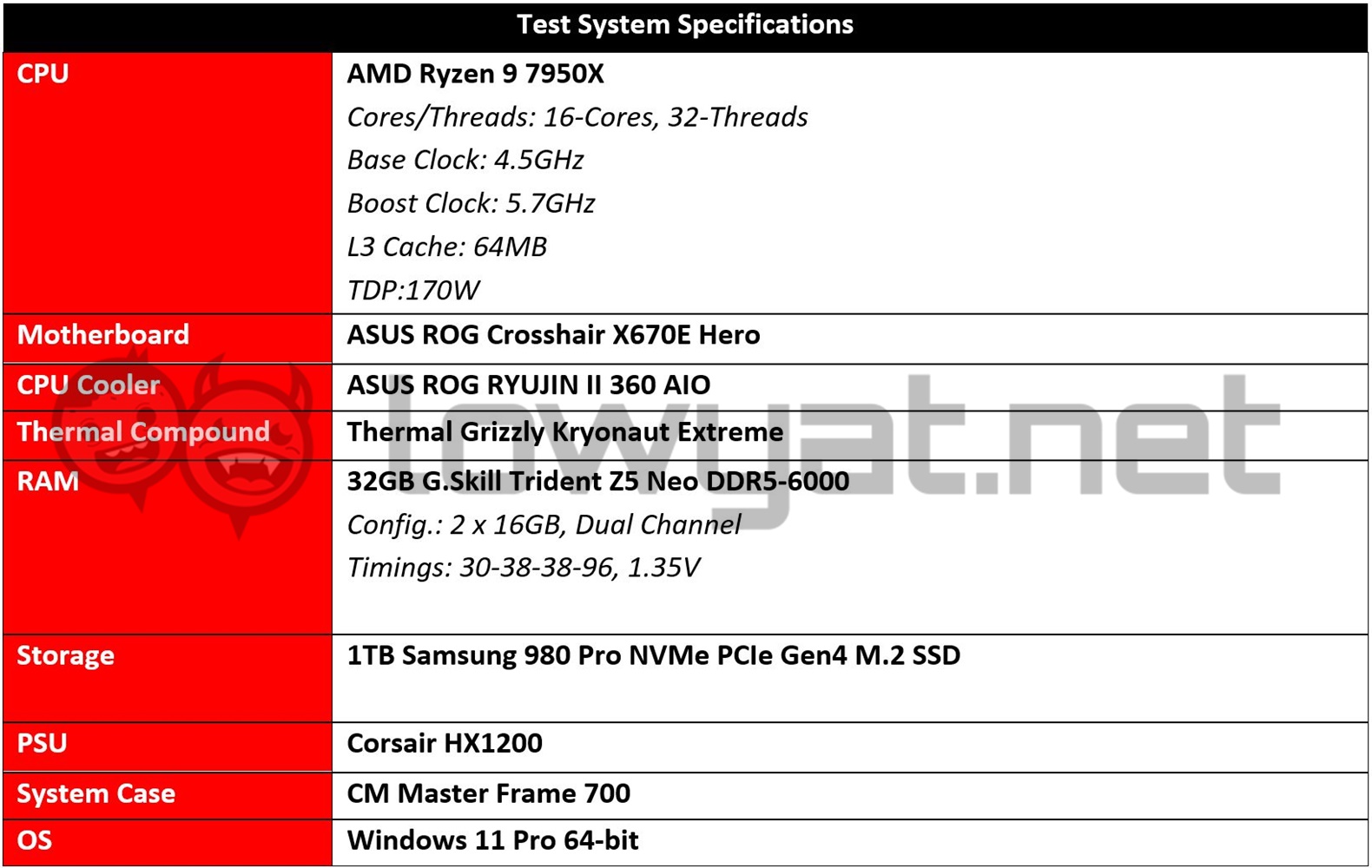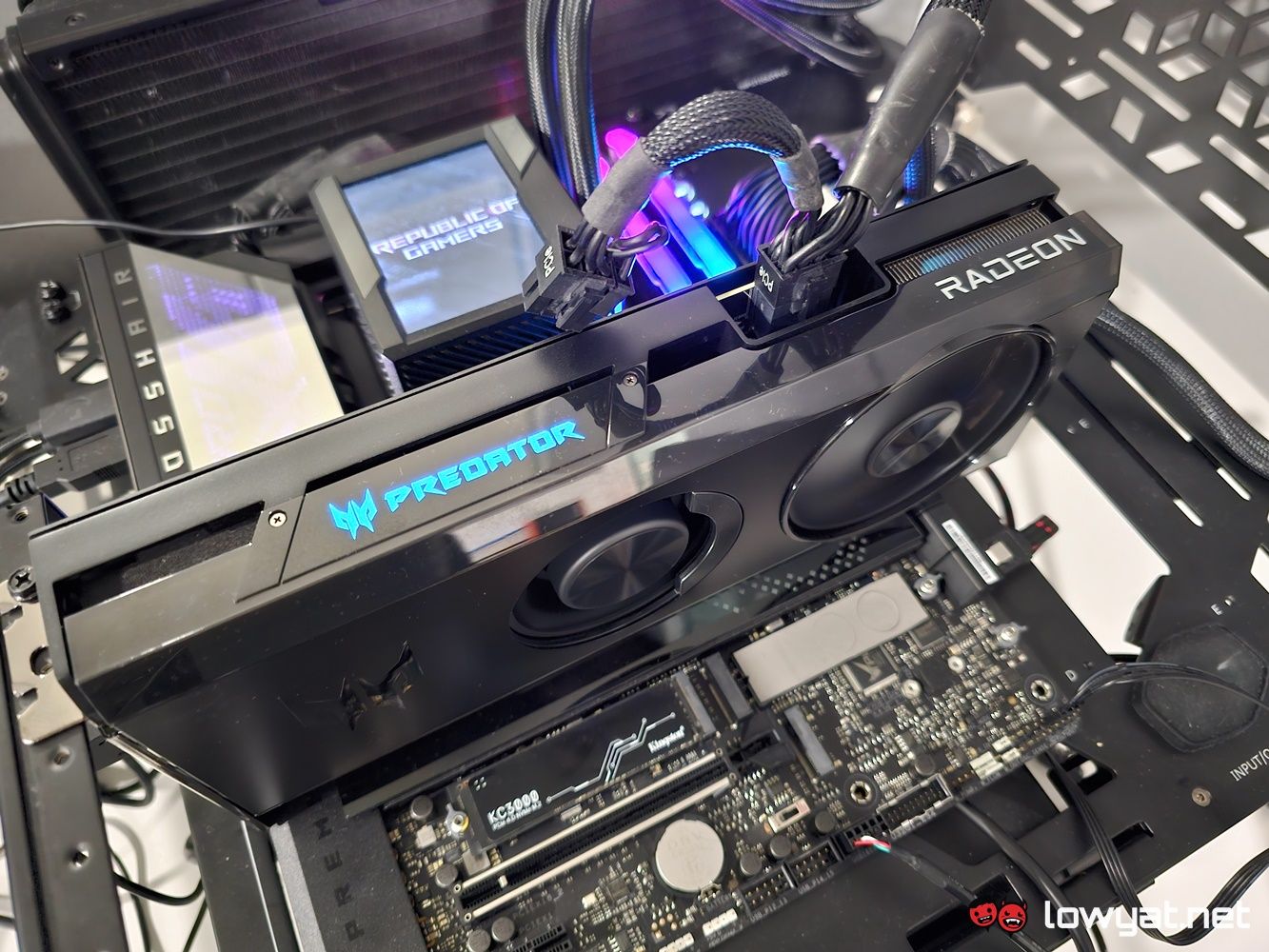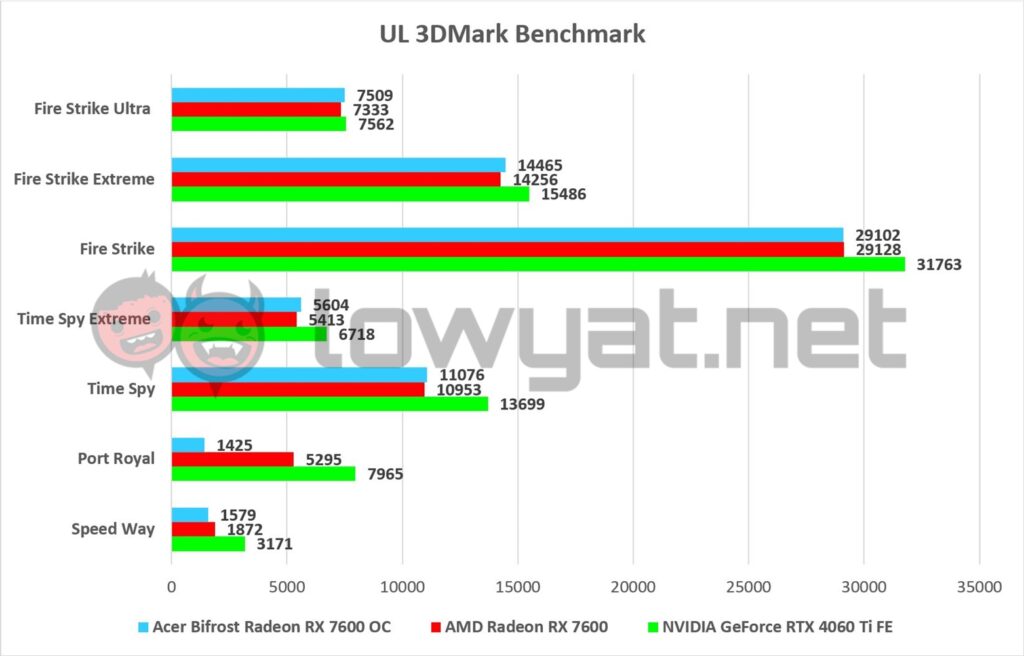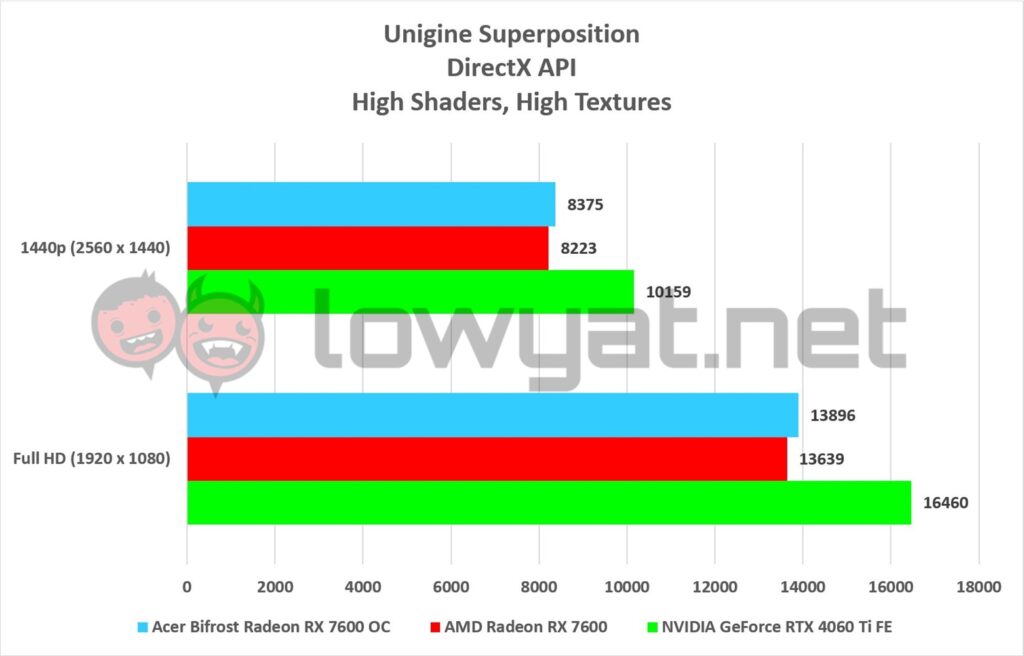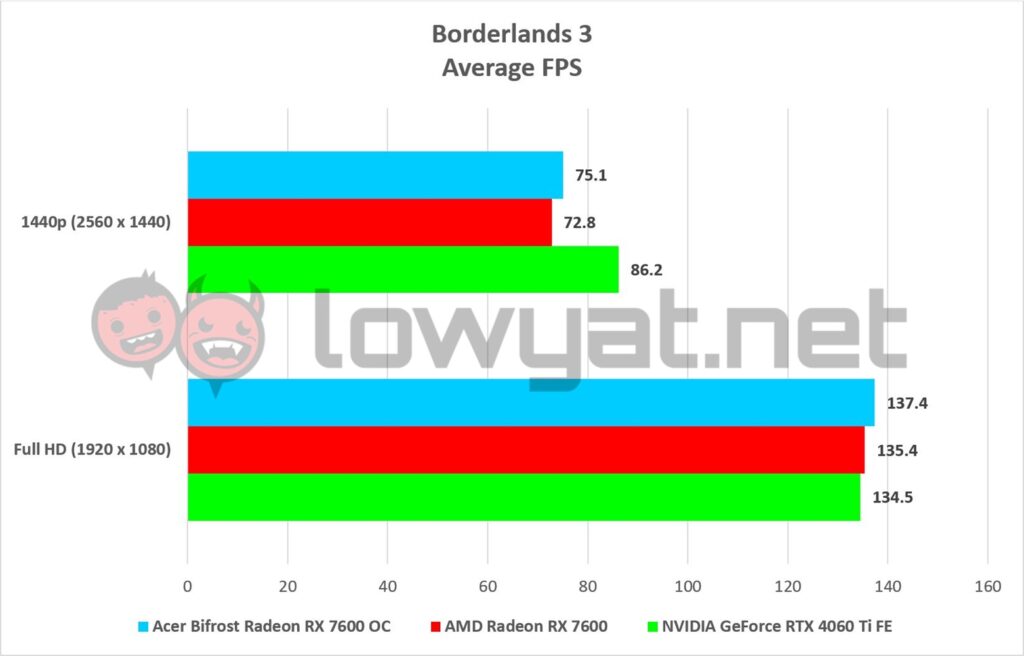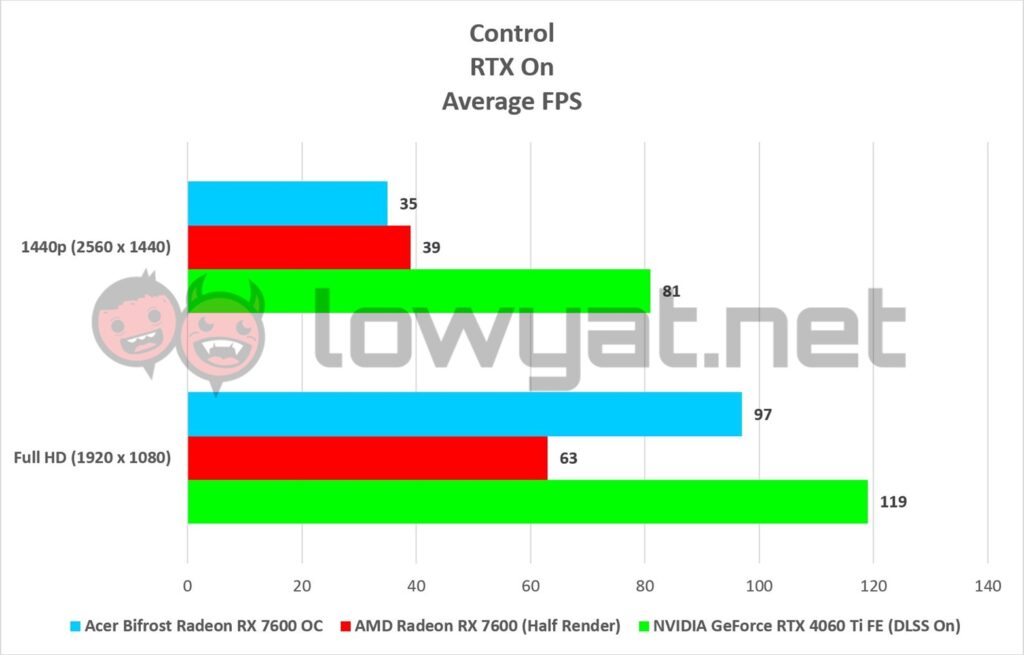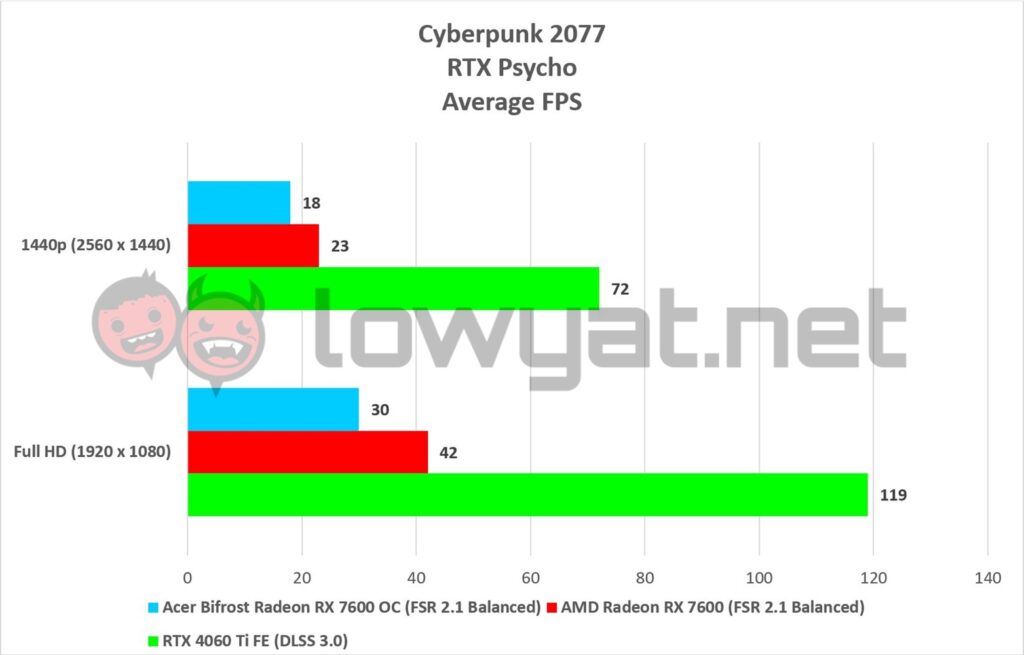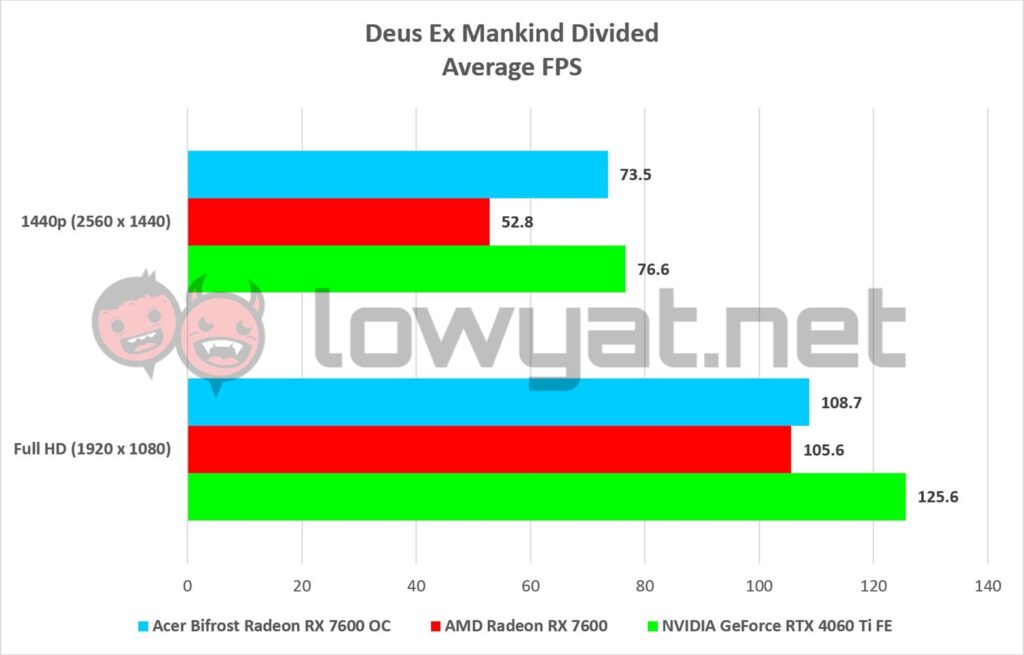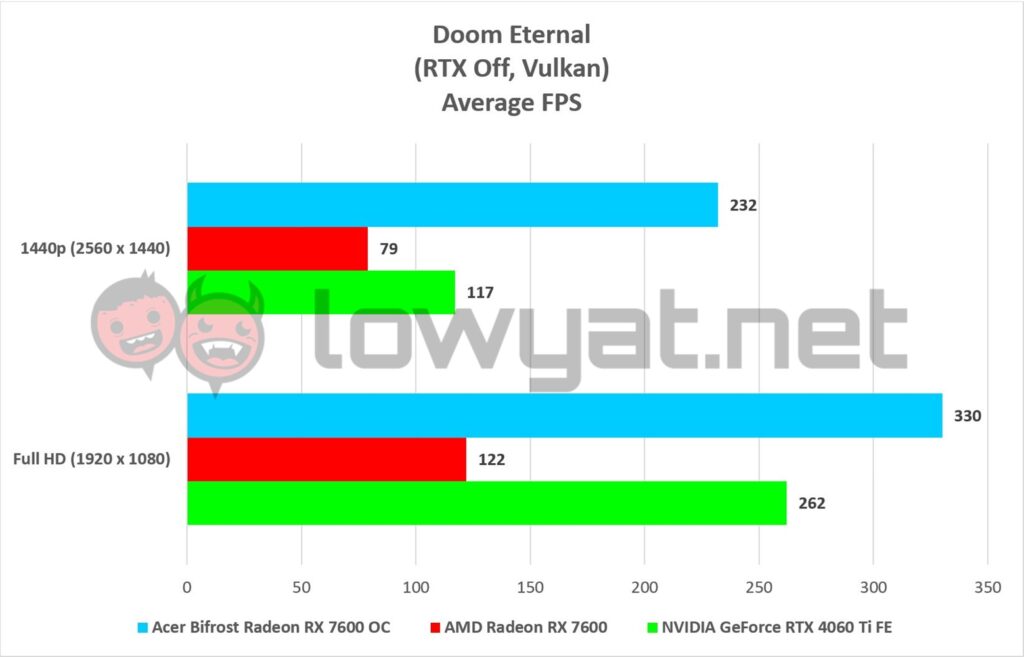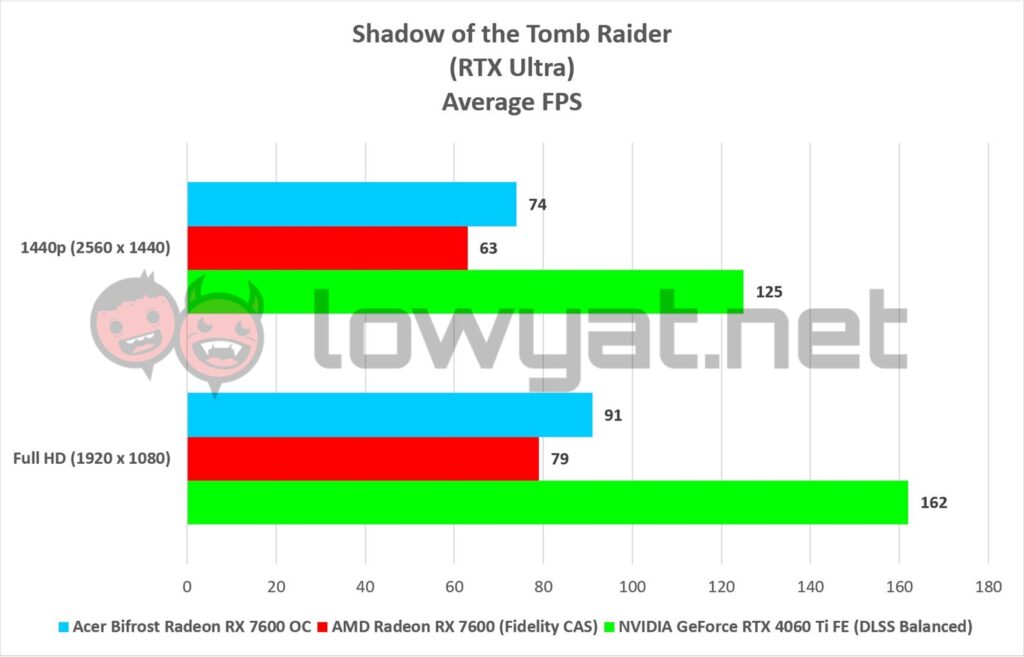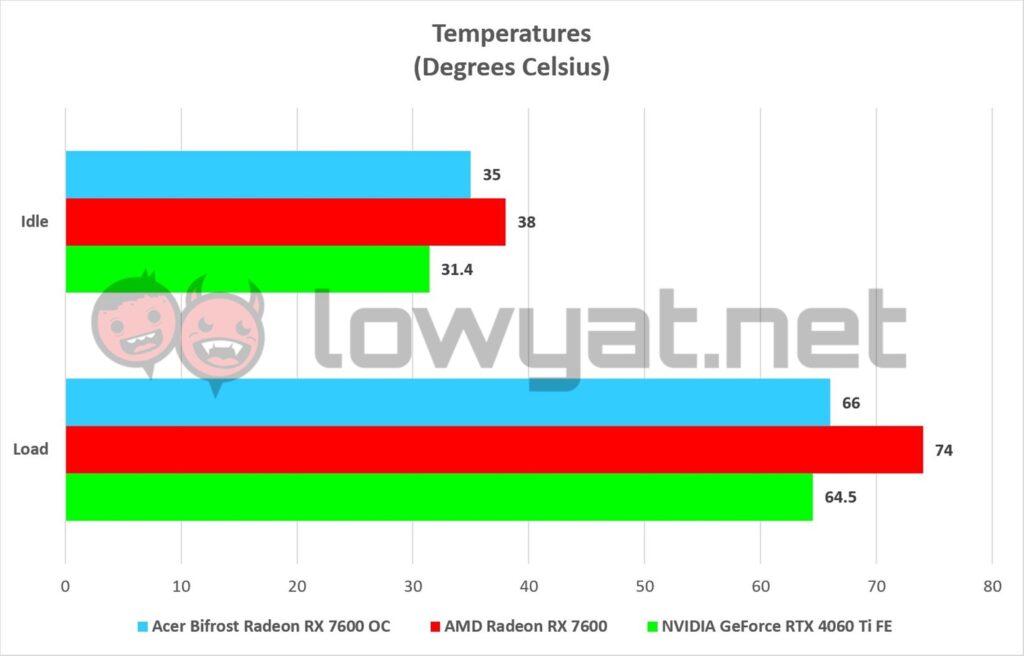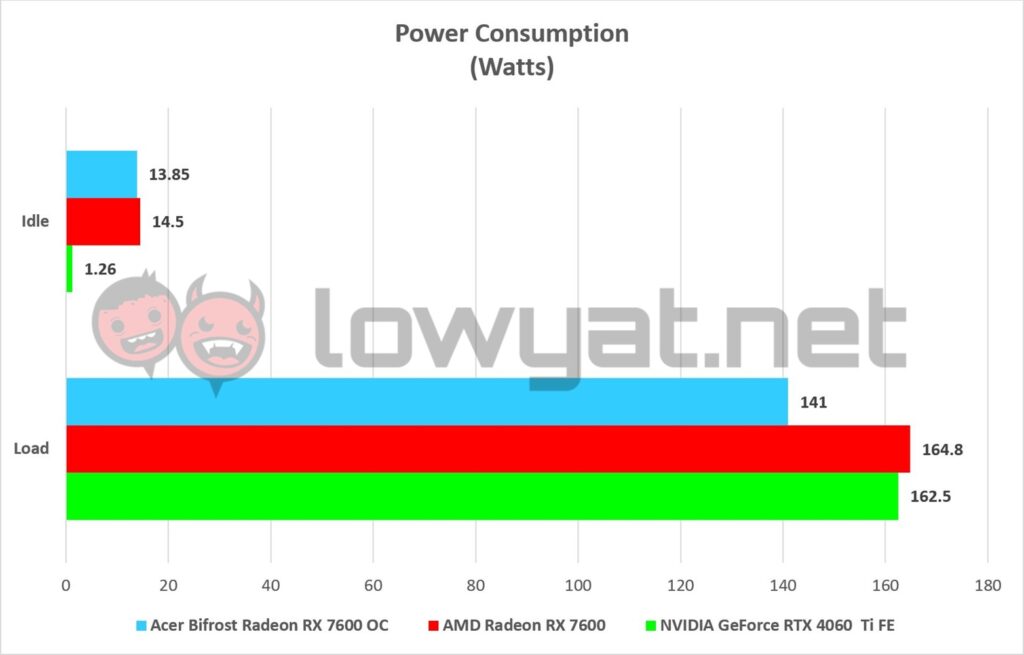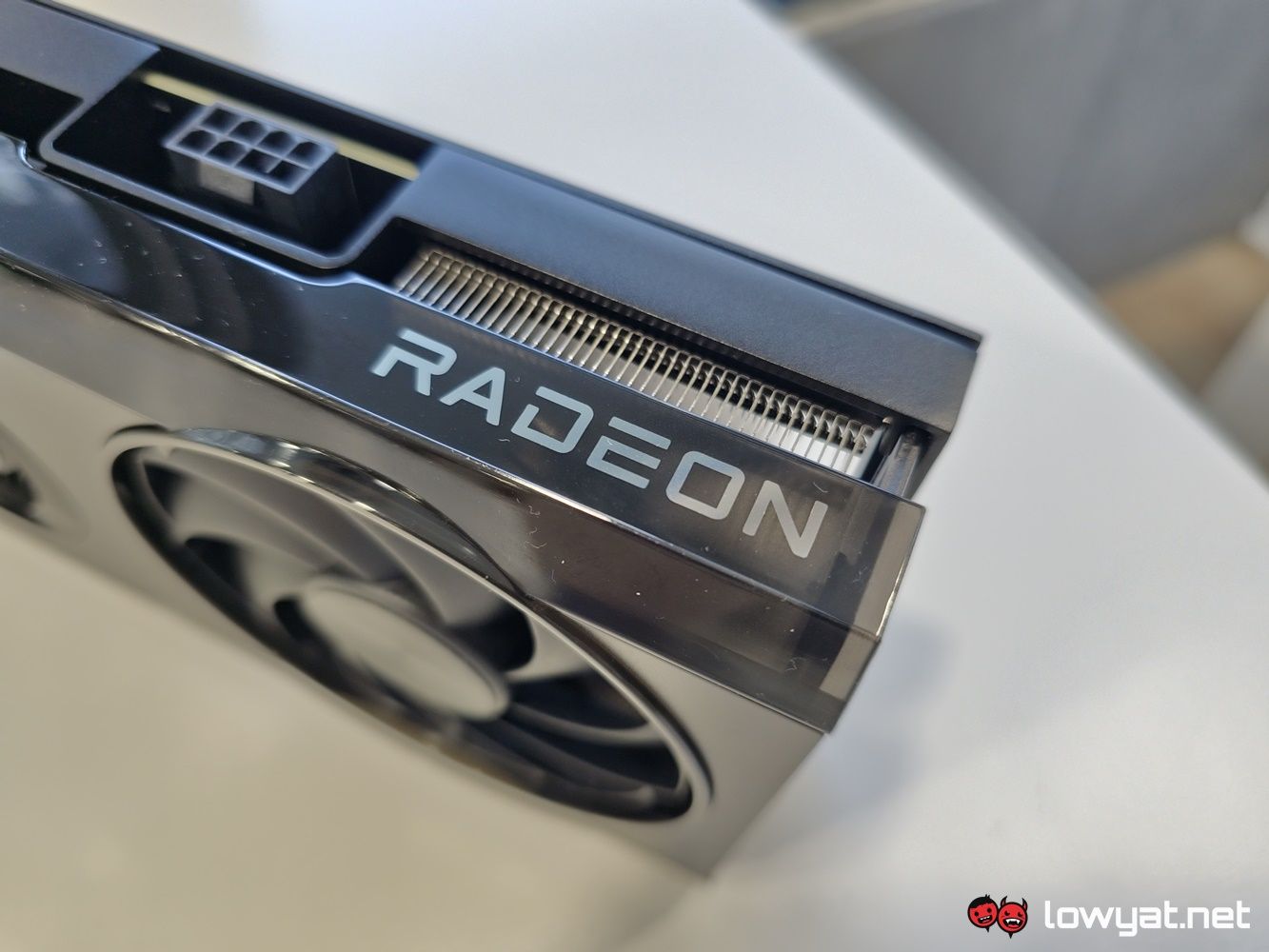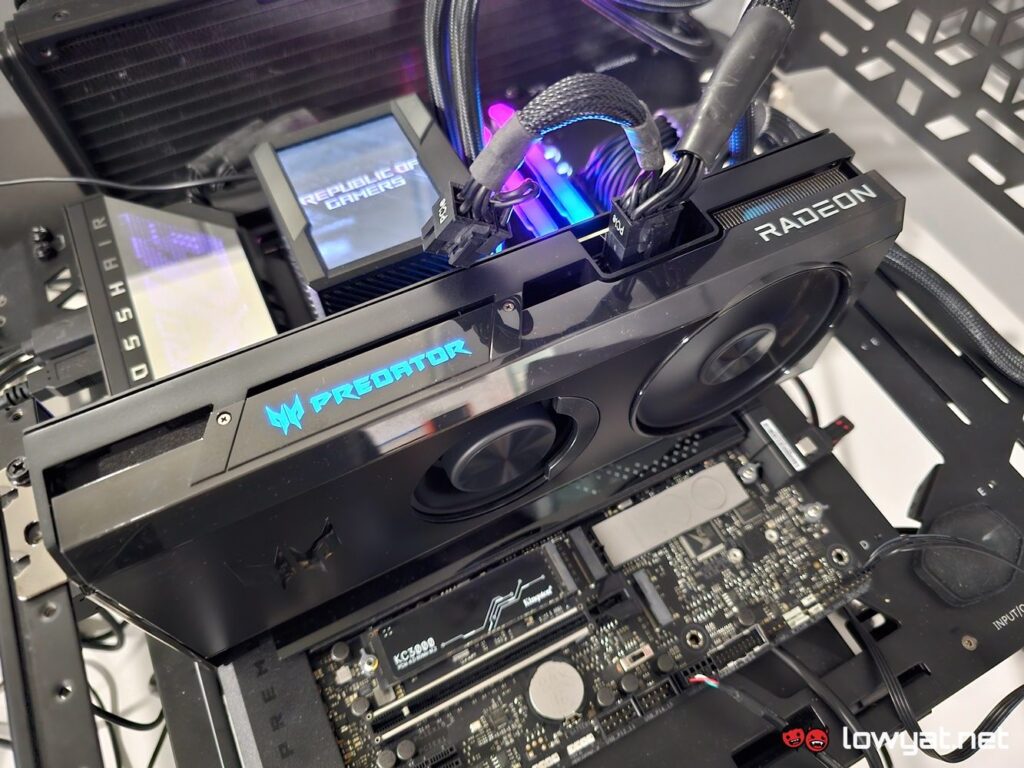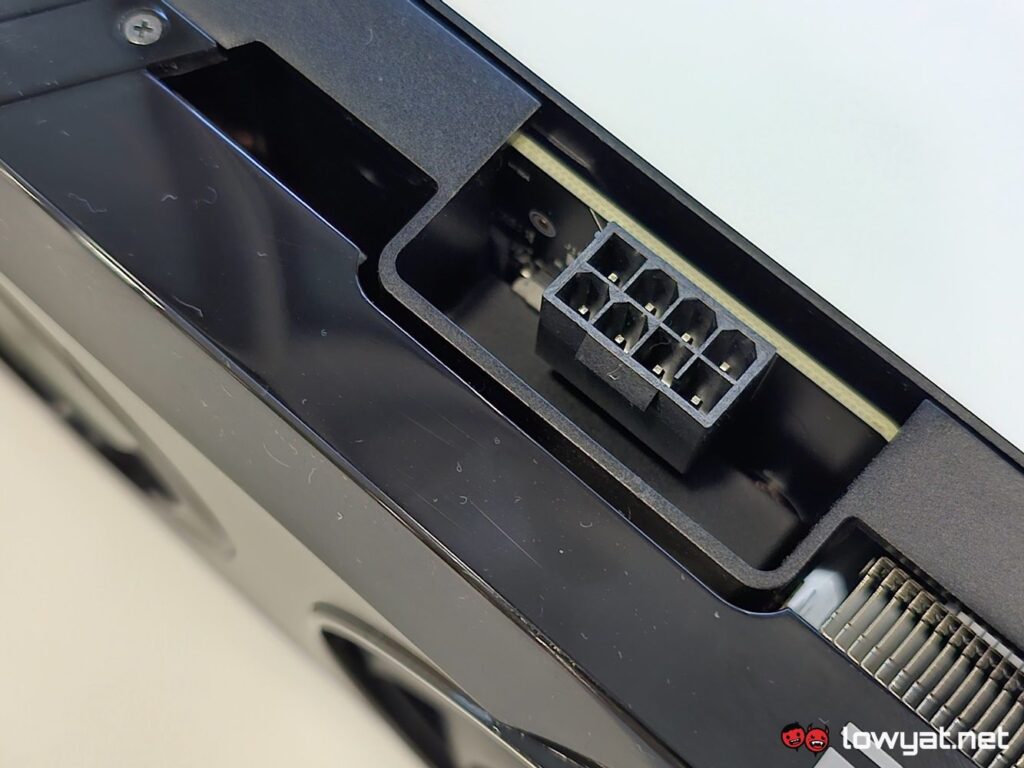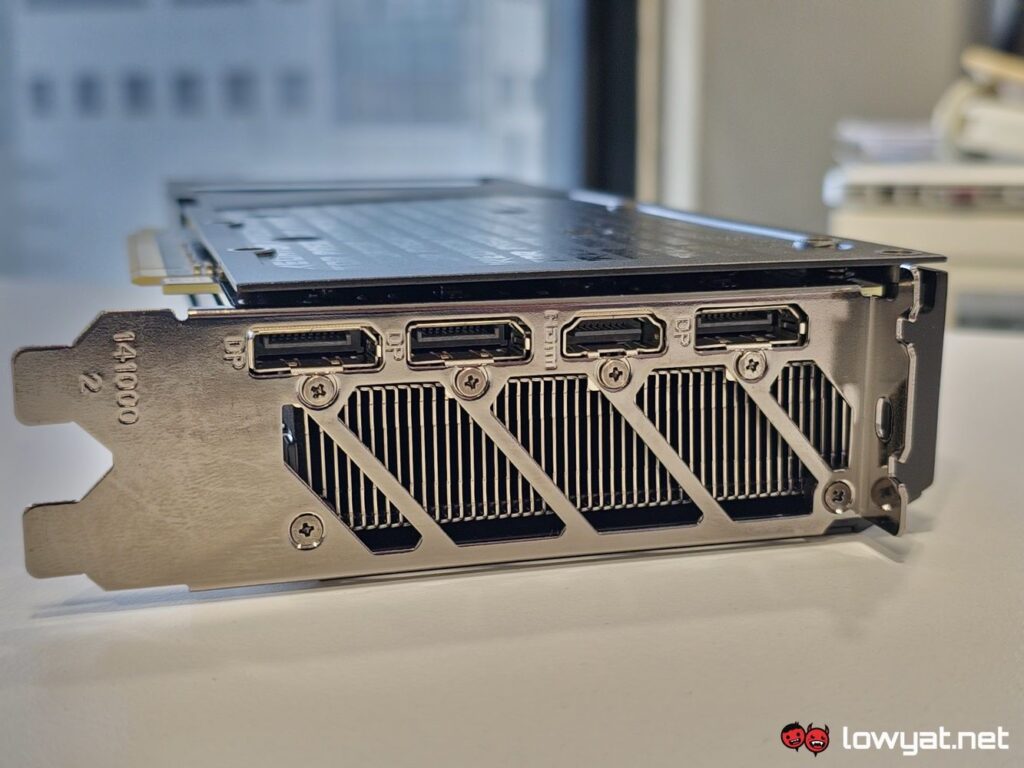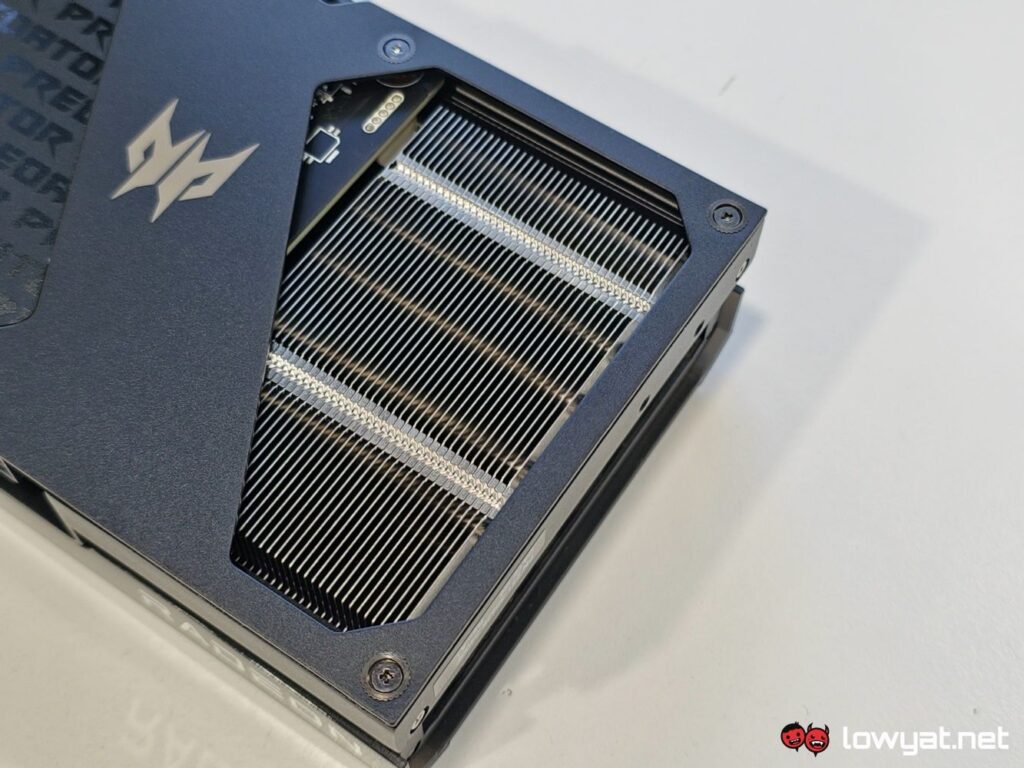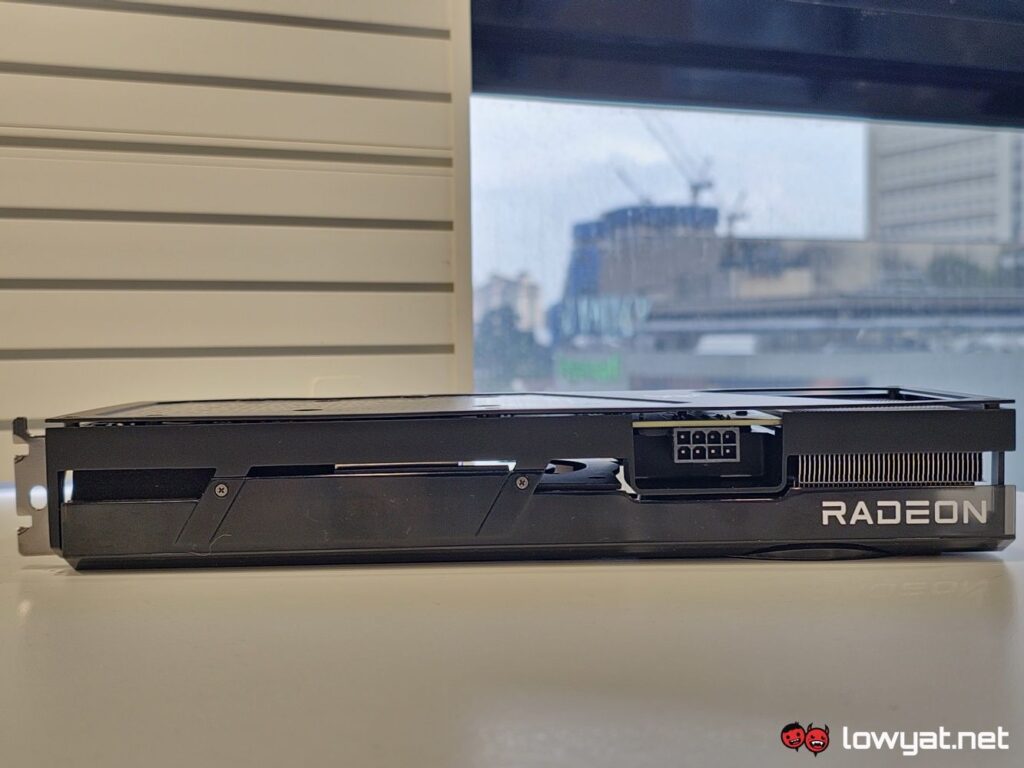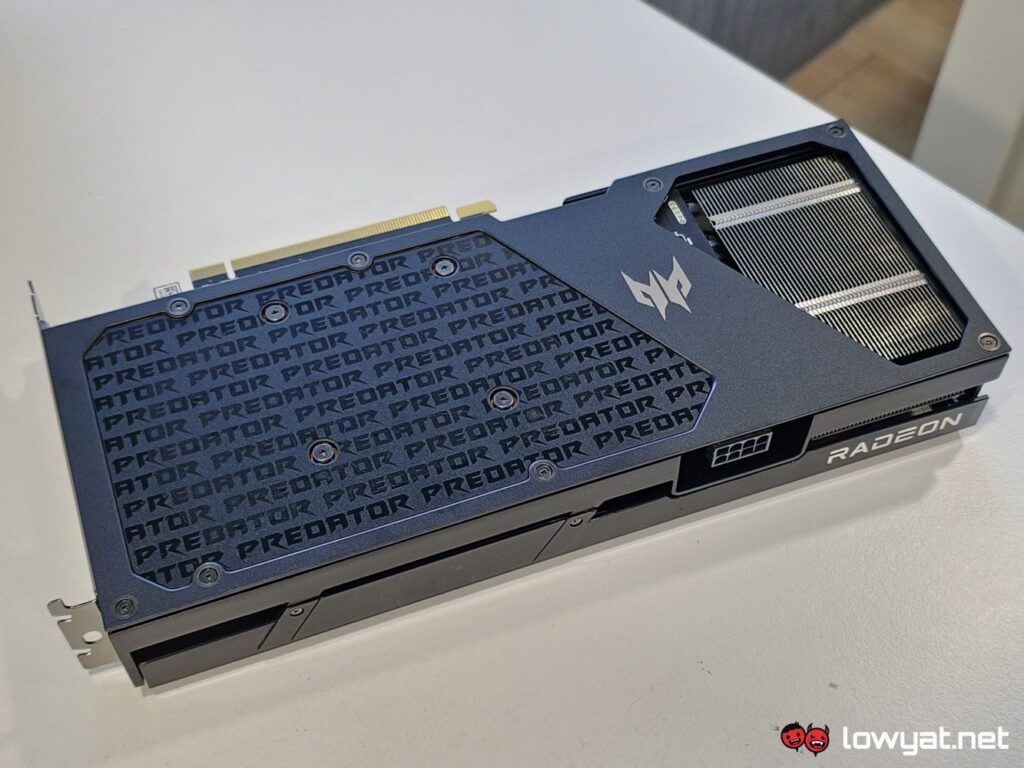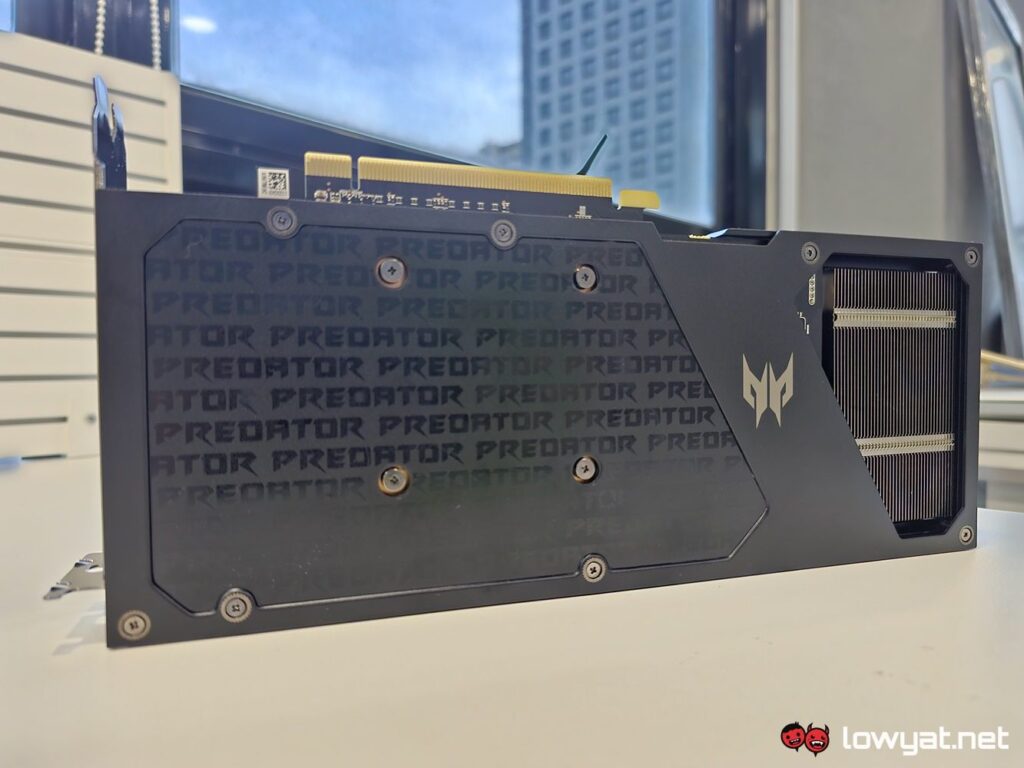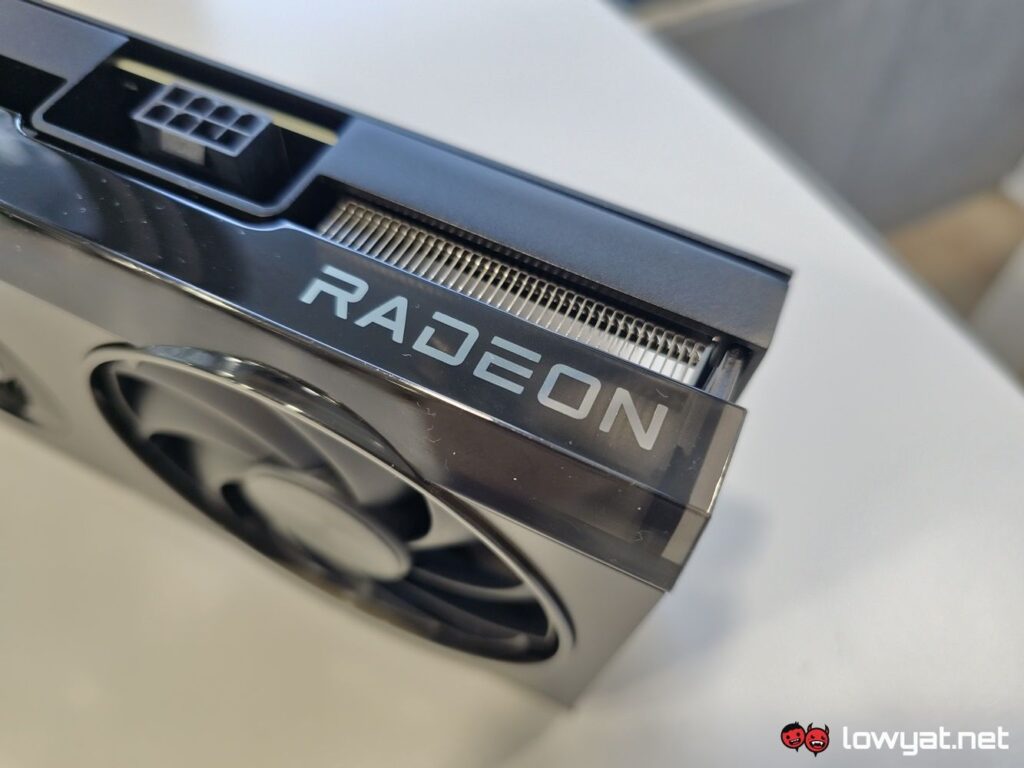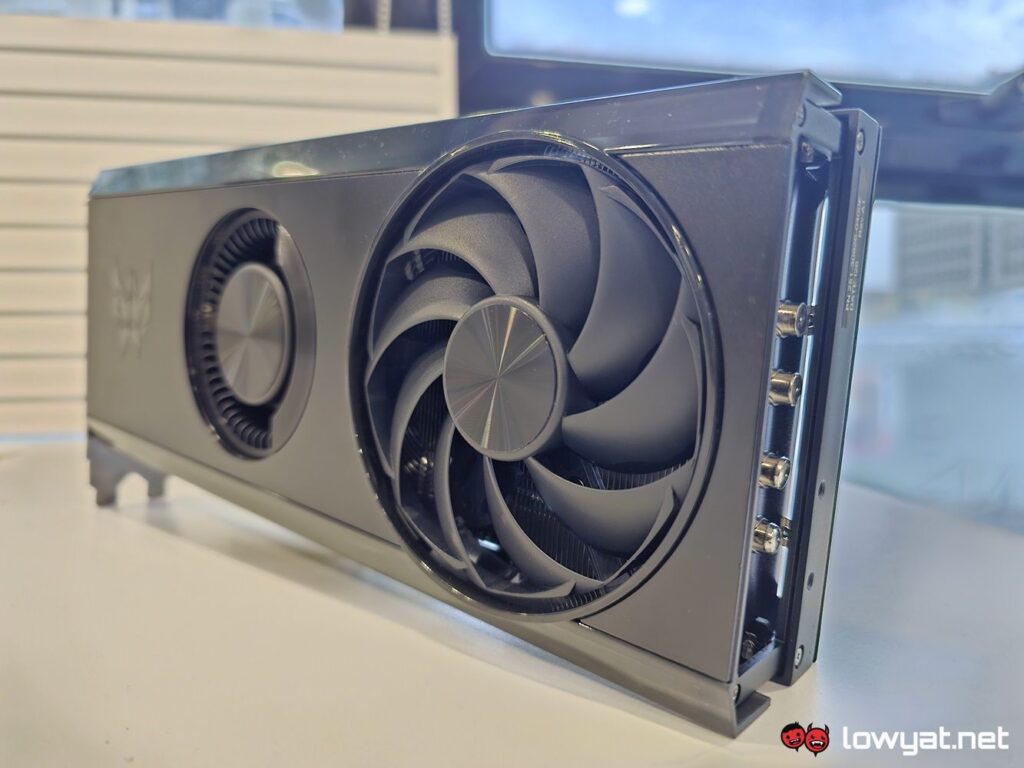Some months earlier, Acer launched two entry-level models into the graphics cards space, The Bifrost Radeon RX 7600 OC Edition and the Bifrost Intel ARC A750. In this review, I’ll be taking a look at the former and wondering just how the hell a company you and I wouldn’t normally associate with 3rd party GPU market, fares with making its own iteration of a card, based on the RDNA3 architecture.
Specifications
Design
For a GPU that’s supposed to be entry-level, the Bifrost 7600 OC, on a scale of looks and size, leans more towards the chunky side. Even with it being a dual-fan cooled card, the heatsink underneath the shroud definitely feels more solid than that of the reference shroud of AMD’s own unit.
And let’s talk about the choice of fan configuration Acer has chosen for its first Radeon GPU. The Bifrost 7600 OC uses a hybrid cooler design, made manifest with a small+BIG fan combo; the smaller fan is a ringed axial fan that sucks air in towards the GPU core and exhausts it directly out the back, while the bigger fan blows the air directly out the top of the card, in similar fashion to the Dual Axis Flowthrough of NVIDIA’s own RTX 30 and 40 Series FE cards.
The Bifrost 7600 OC is also not the most RGB-equipped GPU that I’ve tested and I am grateful to Acer for that. Unlike most gamers and DIY PC builders, I believe that I’m one of a handful of exceptions of crowd that is adamant on transforming their desktop rigs into a unicorn rave.
Acer’s Bifrost 7600 OC is also slightly more power hungry than the stock 7600 – It draws 180W of power, versus the 165W that AMD had set for the card. An upside for the slight increase in power draw means the car also has slightly higher base and boost clocks, the latter being 100MHz higher.
Ports-wise, you get the standard number of DisplayPort 1.4 ports and a single HDMI 2.1 port at the back, which is a bit odd, given that the ports of the 7600 are technically able to support DisplayPort 2.1 and HDMI 2.1a.
Testbench
There isn’t much else to say about the testbench. It’s still the same as when I first reviewed the original 7600, as it is with other GPUs I’ve tested within the last year. That being said, it’s important to note that AMD has released several drivers updates for the Radeon lineup since then. As such, the performance difference between Acer’s card and the reference model will differ, especially from title-to-title.
Before I just into the next section as well, I also need to inform you that this review unit wasn’t the most cooperative or stable card I’ve tested. What I mean by that is this: at random times, this card would suddenly cause my system to restart or simply hang it, causing the fans on my CPU cooler to enter into overdrive. Odder still, in the process of trying to isolate the incident, the Bifrost 7600 somehow decided to self-repair itself as I got closer to the tail end of my review process.
Benchmarks, Temperatures, and Power Consumption
On a synthetic level, the higher clocks are prove beneficial to the Bifrost 7600 OC but unsurprisingly, the gains it has over the reference 7600 are meagre, at best. Oddly enough, the Port Royal test in 3DMark seems to be the only one where the card fumbles and drops the ball.
Otherwise, the Bifrost 7600 really doesn’t miss the mark for entry-level cards and to that end, it paints a picture of Acer getting it right on the first try, sort of. Remember: this isn’t the most stable card that I’ve tested but to be fair neither were the other Radeon 6000 and 7000 Series cards that I tested in the past.
Then there’s the Bifrost 7600 OC’s real-world performance, to which there definitely appears to be a fluctuation with different titles. Again, and as I mentioned before, some of the performance gains that it has over the reference 7600 are very likely due to the most recent driver versions having been improved and optimised. Take Control as an example: At Full HD resolution and with the game rendered at half that, Acer’s card is actually pulling more than 30 fps over the reference version of the GPU.
Likewise, it’s a similar story for the Bifrost 7600 OC in Doom Eternal, where the card can pull well ahead the RTX 4060 Ti FE in the graphs, which is actually quite impressive. And that’s with ray-tracing disabled, to boot. On the flip side, the card does perform slightly worse in Cyberpunk 2077 across both resolutions, compared to the stock 7600, and that’s with FSR 2.1 turned on.
Another point to Acer is its cooling solution. Compared to the reference model, the Bifrost 7600 OC runs considerably cooler, by nearly 10°C even, while running under load. For another matter, it also seems to consume less power under load and again, that’s a little odd when you remember that this card also has a higher TGP threshold. This was as high as it would go throughout my testing period too, leading me to speculate that this lower TGP consumption may have contributed to its slower performance in some titles but again, the possibility of better and improved drivers cannot be ruled out.
Conclusion
Acer isn’t breaking any new grounds, nor is it trying to reinvent the wheel with the Bifrost Radeon RX 7600 OC. As one of two first-entry cards into the GPU realm though – the other entry-level GPU being its iteration of the Intel ARC A750 – I’ll say this: the card hits all the right notes for a first attempt.
I will be frank here as well. The name “Acer”, “graphics cards” and “GPU” are words I never thought I would use as a product description, let alone in the same sentence. But, for better or worse, there you have it: The Bifrost 7600 OC is officially another entry-level option for gamers to consider, in a sea comprising of other entry-level graphics cards.
Photography by John Law.
Follow us on Instagram, Facebook, Twitter or Telegram for more updates and breaking news.

